Many gardeners have long appreciated all the advantages of the bush cherry. This is an excellent replacement of familiar cherry trees. Cherry bush has good endurance and unpretentiousness. This shrub will give you not only a rich harvest of cherries, but also will make a variety of your landings. In this article we will look at the most popular varieties of bustic cherry, the features of planting this shrub, the secrets of care.
Brush cherry - Botanical description
- Cherry bush is also called the cherry steppe or cherry shrub. Belongs to the family of pink and the ratio of the cherry.
- Cherry bush is widespread in the territory from Central Europe and to Altai mountain areas. Prefers to grow in well-lit places and on carbonate soils.
- Cherry bush is considered one of the ancient species-progenitors of cherry ordinary.
- Cherry bush does not exceed 2 meters in the height.
- Despite the humble sizes of the shrub, the root system of the cherry bush is quite developed. The bush is ridicked up by the root pig, which is the cherry update means.
- Krone in Cherry Shrubniki spread and spherical. In diameter, it can reach from 90 cm to 150 cm.
- Young busty cherry shoots have a green color, and as they grow become brown or brown-violet.
- The leaves of the cherry of the bush grow on the petioles reaching 1.5 cm long. Lancel leaves, narrowed to the base. On the front side, the sheet is painted in a dark-green color, and from the back - in light green.
- Snow-white flowers appear on the cherry bush before the dissolution of the leaves or simultaneously with them. Flowers can grow singly, and can be collected 2-4 pieces to umbrella inflorescences.
- The fruit of cherry bush is the rounded kitchen cabin, which in diameter reaches 2.5 cm. It has a sour-sweet taste. May have a red, pink or almost black shade. Fruits are suitable for eating fresh form and for cooking jam, compote, jam, etc.
Advantages and disadvantages of bush cherry
Among the advantages of a bush cherry can be allocated as follows:
- cherry bush is very drought-resistant;
- cherry bush has excellent frost-resistant characteristics. Shrub is able to withstand frosts up to minus 50 degrees;
- cherry bush is valued by many gardeners for their decorative qualities. The bush is early covered with flowers and decorate the garden;
- cherry bush is distinguished by unpretentious to the soil, can grow on the poor, stony areas.
Among the disadvantages that are not so significant, the following can be allocated:
- the cherry bush will be bad to grow on a shady area;
- the fruits of the cherry bush are slightly inferior in their taste characteristics of cherry varieties.
Brush cherry - Photo
Bush cherry - varieties
Cherry bush generous
The generous variety is late and self-polished. Shrub is capable of reaching 2.5 meters in height, and Krona is 2 m in diameter. Collect the harvest of cherries can only be on the 3rd year after landing. With proper care and under comfortable conditions, the brass cherry variety can be froning for 35 years. The advantage of this variety is that the fruits are quite large and are valued for excellent flavoring characteristics.
Cherry Brush Maksimovskaya
The steppe cherry of this variety is able to reach a height of up to 2.5 meters. The crown in the shrub has a slightly elongated shape and the average degree of thickening. Fruits begin to ripen in the second half of July. The mass of one mature cherry is about 4 grams. Among the disadvantages of this variety, relatively low resistance to fungal diseases and low frost resistance can be distinguished. Of the advantages of Maksimovskaya variety, you can note good drought tolerance. Ripe cherries can be used both in fresh form and in recycled. If small storage of cherries or transportation is required, then the fruits are well transferred. For polling this variety, the partner varieties should grow on the site - the Altai swallow, desired, Subbotinskaya.
Cherry Brush Rubinovaya
A bush reaches 2.5 meters in height, has a wide and empty crown. The flowering period comes at the end of May, and the ripening of fruits in early August. Cherry flowers are collected in small inflorescences of 2-4 pieces. The leaves have a shiny leathery surface and a dark green shade. Fruits may have different size, the average mass of ripe fetus is 3.5 grams. Cherries have a light yellow pulp of sour-sweet pleasant taste. To pollinate the cherries of this variety, the cherries of other partner varieties (Vladimir, Patriotic) must grow on the site. Brown cherry cherry starts fruit on the 2nd year after landing. Of the rather significant disadvantages of this variety, you can note the low resistance to diseases.
Cherry Brush Altai Swallow
Bust cherry variety Altai swallow has long earned the love of many gardeners. Undoubted advantages is high frost resistance and excellent flavoring characteristics of fruits resembling a cherry taste. Shrub reaches a height of only 150 cm. Crown is spread and prone to thickening. You can collect harvest in the second half of July. Mature cherries are not stored too long and poorly transferred long-term transportation.
Cherry Brush Bolotovskaya
LateVesta Cherry Bolotovskaya has a lot of advantages. First, even a novice gardener will cope with the cultivation of this shrub. Secondly, the cherry is not only frost resistant, but also drought-resistant. Under favorable growth conditions and proper care, a delicious harvest can be collected for 30 years. Fruits are large, burgundy shade. In addition, Bolotovskaya variety is a completely self-polished variety.
Cherry bush Subbotinskaya
Cherry Brush Subbotinskaya is capable of reaching a 2.5 meter height. Krone has a very dense and spherical. Cherry blooms beautiful gentle pink color. Flowers 2-4 pieces are going into small inflorescences. The leaves of the variety have a dark green color, a lancet-eye shape and a slightly serrated edge. A distinctive feature of the bush cherry of this variety is the tendency of its crown to thickening. If you do not engage in the formation of the crown, then the shrub can become a "victim" of insect pests. With proper care, the subbotinskaya cherry gives a delicious crop of fruit, weighing up to 5 grams. From one shrub you can collect up to 9 kg of cherries. Since Subbotinskaya variety is self-visible, in the garden it is recommended to plant along with partner varieties: Altai swallow, desired, Selivertovskaya.
Cherry bush university
This trunk cherry grade was described in 1991. Krone Shrub has an oval shape and an average degree of thickening. The cherry reaches a maximum height of 150 cm, and the diameter of the crown is about 190 cm. Cherry blooms with white flowers, which are collected several pieces in small inflorescences. The fruits of the university bush cherries have a dark red color. The weight of one mature fetus is only 1.5 grams. Some gardeners are convinced that the real flavoring characteristics of the cherries are disclosed in the treated form. If you decide to plant a steppe cherry of this variety in my site, you can collect a harvest in mid-July already on the 3rd year after landing. A variety of partner for pollination will suit Novosletskaya grade.
Cherry bush Novosletskaya
If you are in the search for compact and pod, then the Novosletskaya grade will become a worthy choice. The shrub reaches only 115 cm in height and has an empty crown. Dark-red berries ripen on thin shoots. The mass of one mature fetus average is 2 grams. You can begin to collect the first harvest in the second half of July. Perfect grade-partner is sort of Irtysh.
Wild cherry bush
Wild bush cherry served as the basis for the removal of many modern steppe cherry varieties. This shrub grows up to 2 meters in height. Its reproduction in the wilderness occurs with the help of root offspring that surround a bush in large quantities. The fruits of this mellitis shrub, although large, but pretty sour.
Bush cherry Shadrinskaya
Shrubs of this variety are able to reach a height of up to 190 cm. Crown of Shadrinskaya cherry spherical, has an average degree of thickening. The bark has a brown shade with gray raid. You can start a harvest in the second half of August. The mass of one mature fetus is about 3 grams. With proper care and comfortable conditions of growth from one shrub, you can collect up to 7 kg of delicious harvest. Among the disadvantages, it can be noted that the cherries are quite poorly transported.
Landing a bush cherry
We choose the soil for planting a bush cherry
One of the main advantages of most varieties of a bush cherry is their unpretentiousness to the composition of the soil. If the ground is not particularly fertility on your site, it will not be a hindrance for growing steppe cherries. It is desirable that the soil possessed the neutral level of acidity, was loose, soup.
Choose a place to land a bush cherry
Where does the bush cherry grow best? It is desirable to choose a sublime area or a plot on the slope. Consider both the fact that the close flow of groundwater to the surface of the Earth will provoke the rotation of the root system. The place must be well lit, protected from winds. Do not put a steppe cherry near tall trees or high buildings that will create a shadow. If this is not possible to avoid, choose the southern side for landing.
Preparation of landing pit for bush cherry and landing
- It is necessary to start planting a bush cherry in the spring when warm weather is installed and the earth warms well. Buy seedlings of bush cherry can be used in any specialized nursery, which is engaged in the cultivation of plants for sale.
- Drop the landing pit with approximate sizes 60 * 60 * 60. Some gardeners advise on the preparation of landing pit in the fall. If you plant a few bush cherry saplings, then between them you need to leave a distance of 2.5 meters, since the sizes of the crown to some varieties exceed 2 meters.
- In each boarding hole, the layer of humus is placed on the bottom of 4-5 kg \u200b\u200bper 1 sq.m.
- Some gardeners also enrich the soil before planting phosphorus or potash fertilizers.
- In any preparation, the seedlings of the cherry bush do not need. If you notice that the roots dried a little, you can put them in the water for 4-5 hours.
- After the landing pit is ready, you can start landing. Install a seedling in the center of the pit, straighten the roots and start sprinkling their land. Periodically, shake the seedling so that the Earth filled all the airspaces between the roots.
- The root neck after landing should remain over the surface of the Earth at a distance of 3-4 cm.
- Build a furrow for watering around the shrub at a distance of 30 cm.
- Pour the bush cherry immediately after landing. After irrigation, the soil will go away a little bit and it will have to shine a bit so that the root neck does not rise above the surface of the earth too high.
- After irrigation, the priority circle will definitely be closed by humus or sawdust in order to reduce the rate of moisture evaporation.
Brush cherry - care
How to water a bush cherry
Almost all varieties of bustic cherries are drought-resistant. But it is still necessary to water the bushes. Cherry Steppe is quite enough of the 2-3 irrigation per season with an abundant amount of water (10 liters under one bush). Gardeners usually combine these watering with fertilizer.
How to feed a bush cherry
The bush cherry may well do without fertilizer. But you can "pamper" your shrubs feeding during flowering and one more time after 14 days. You can prepare the following solution of 10 liters of water:
- 10 gr urea,
- 15 gr potassium chloride,
- 25 grams of superphosphate.
You can also prepare this solution for feeding a bush cherry:
- 50 liters of water;
- 1 kg of ash;
- 10 kg cowboat.
Under each plant contribute half the bucket of the resulting solution.
How to protect the bush cherry from diseases and pests
Like all fruit shrubs in the garden, the steppe cherry can be exposed to the invasion of pests or infection with various fungal or bacterial diseases. To avoid similar trouble in the cultivation of a bush cherry, you should follow the following rules:
- do not neglect the tips on choosing the optimal place to plant a bush cherry. If you plant a plant at a low area, a plot with close groundwater, on the site where the snow level exceeds 90 cm, then the root system of the cherry can begin to be rotated;
- do not neglect the tips on landing and care for bush cherries. The watering mode is especially important, which should not be too frequent and abundant. Most varieties of bush cherries are drought-resistant;
- in order to protect the bush cherry from insect pests, it is useful to grow smoky herbs near shrub (wormwood, mint, mother-and-stepmother);
- if you have noticed pinkish spots or raid on the leaves, it may indicate an infection of a rather dangerous fungal disease - a cokkkvikosis. This fungus is able to completely ruin the plant, so it's not worth the treatment with treatment. In the fight against COFCKIZATION, such drugs like Maxim, Chorus showed the greatest efficiency. It is also very important to quickly remove damaged shoots, leaves, destroy the fallen foliage;
- preventive treatment of steppe cherries with copper vigorous is able to protect the tree from many parasites.
How to cut a bush cherry
All bustic cherry varieties require trimming. It should be not only sanitary, but also forming, rejuvenating. Properly spent trimming cherry will contribute to the formation of a beautiful crown, a plant will be removed from diseases and pests, increase fruiting. Some varieties require stronger trimming, since their crowns are prone to thickening. With a strong thickening crown, the fruits will appear only on lateral shoots. Consider a feature of trimming of a bush cherry:
- in the spring and autumn, sanitary trimming is carried out with the removal of all dry branches damaged;
- forming trimming should form a sprawling spherical shape of the cherry. It is possible to engage in the formation of the crown after the first year after landing. At the base of the shrub, the branches should be located every 3-8 cm;
- after carrying out the formative trimming, the bush cherry should remain at least 5 major branches. In the future, shoots in the middle of the bush are removed, which only thicken the crown. In any case, when forming the crown of a bush cherry, you need to strive for the creation of a spherical shape, which is not only more aesthetic, but also greatly facilitates the plant care and harvest;
- after approximately 6-7 years old, you need to rejuvenate the bush cherry at the expense of root offspring.
Any kinds of trimming of a bush cherry should be carried out in spring to waking up the kidneys or in the fall.
The bush cherry will make a variety of in your garden plot, and the care of this plant will not cause special hassle. All that requires a bush cherry is rare watering and pruning. In compliance with all these simple demands, shrubs will give abundant yields for 30-35 years.

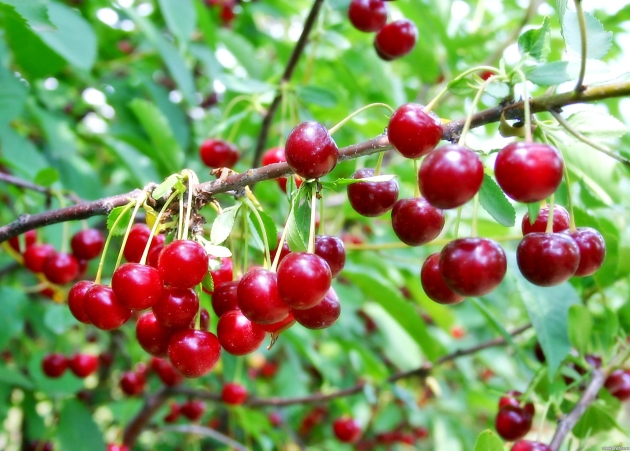
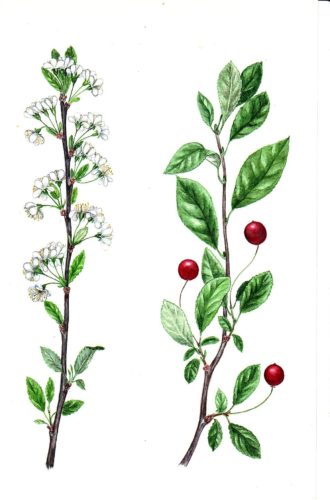
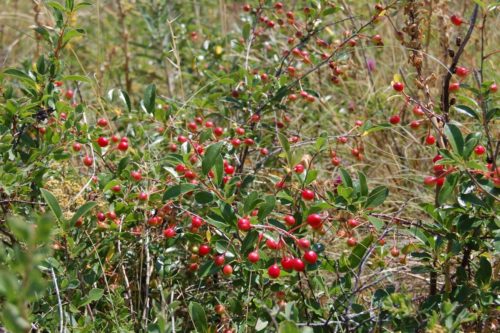
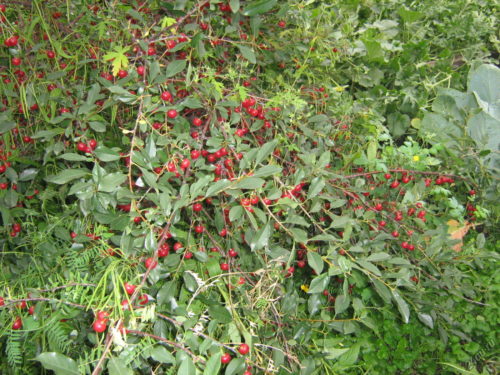
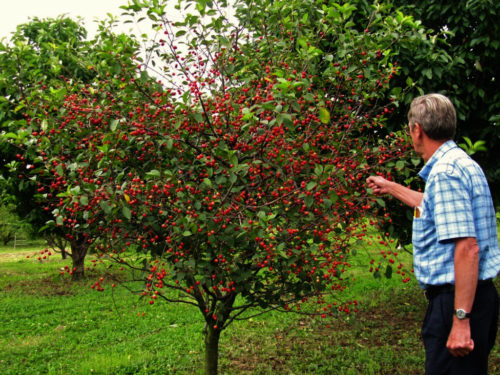
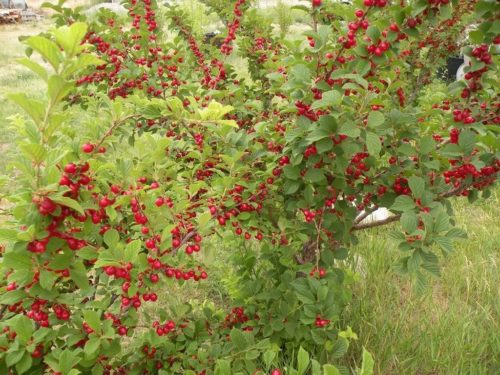
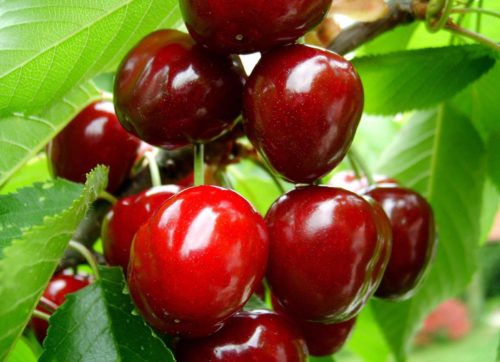












 Start a discussion ...
Start a discussion ...